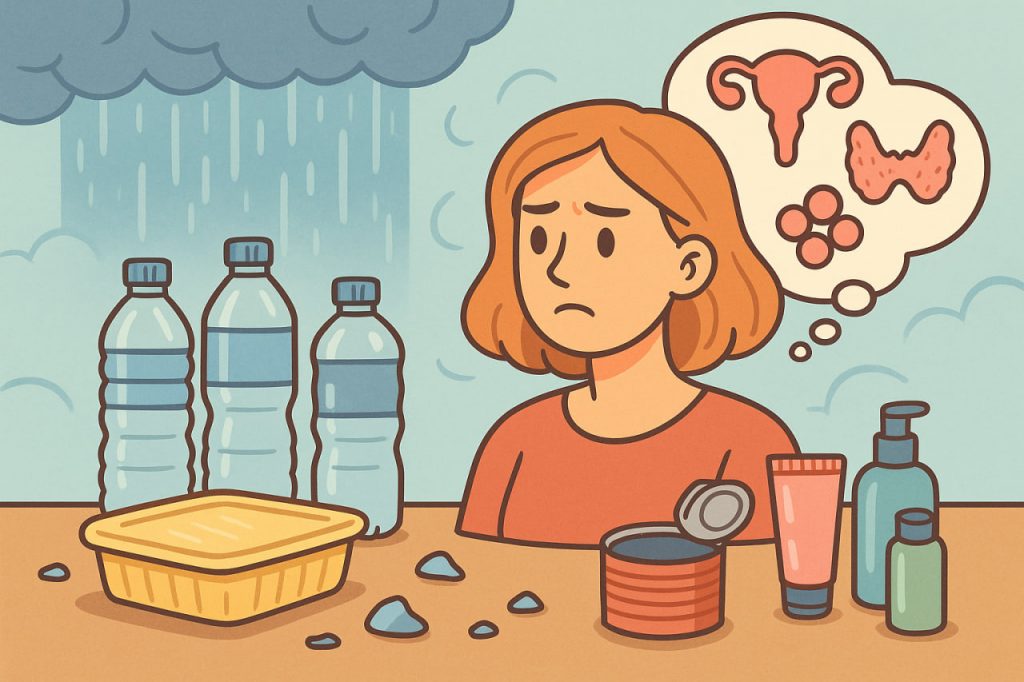Plastic is an essential part of modern life, present in packaging, household items, clothing, and even food storage containers. However, certain chemicals used in plastics can leach into food, water, or the environment and enter the human body. Some of these substances act as endocrine disruptors, interfering with the normal functioning of hormones—the body’s chemical messengers.
1. Endocrine Disruptors in Plastic
The most studied plastic-related chemicals include:
- Bisphenol A (BPA): Found in some food containers, water bottles, and can linings.
- Phthalates: Used to make plastics flexible; common in packaging, toys, and cosmetics.
- Polystyrene chemicals: Can migrate from disposable cups and containers into hot food or drinks.
These compounds can mimic or block natural hormones, disrupting communication between cells and organs.
2. How Hormonal Disruption Happens
Endocrine disruptors from plastic can:
- Mimic natural hormones like estrogen or testosterone.
- Block hormone receptors, preventing the body from responding correctly.
- Alter hormone production or breakdown, leading to imbalances.
Such effects may impact growth, reproduction, metabolism, and mood regulation.
3. Health Risks Linked to Plastic Exposure
Long-term exposure to hormone-disrupting chemicals from plastics has been linked to:
- Reduced fertility in both men and women.
- Developmental problems in children.
- Increased risk of certain cancers (breast, prostate).
- Metabolic disorders such as obesity and type 2 diabetes.
4. Reducing the Risks
To minimize exposure:
- Use glass, stainless steel, or ceramic containers for hot food and drinks.
- Avoid microwaving food in plastic.
- Choose BPA-free and phthalate-free products.
- Reduce use of single-use plastics in daily life.
Glossary
- Hormones: Chemical messengers regulating body functions.
- Endocrine disruptors: Substances that interfere with hormone systems.
- BPA (Bisphenol A): A chemical used in plastics that can mimic estrogen.
- Phthalates: Chemicals that make plastics flexible and soft.


